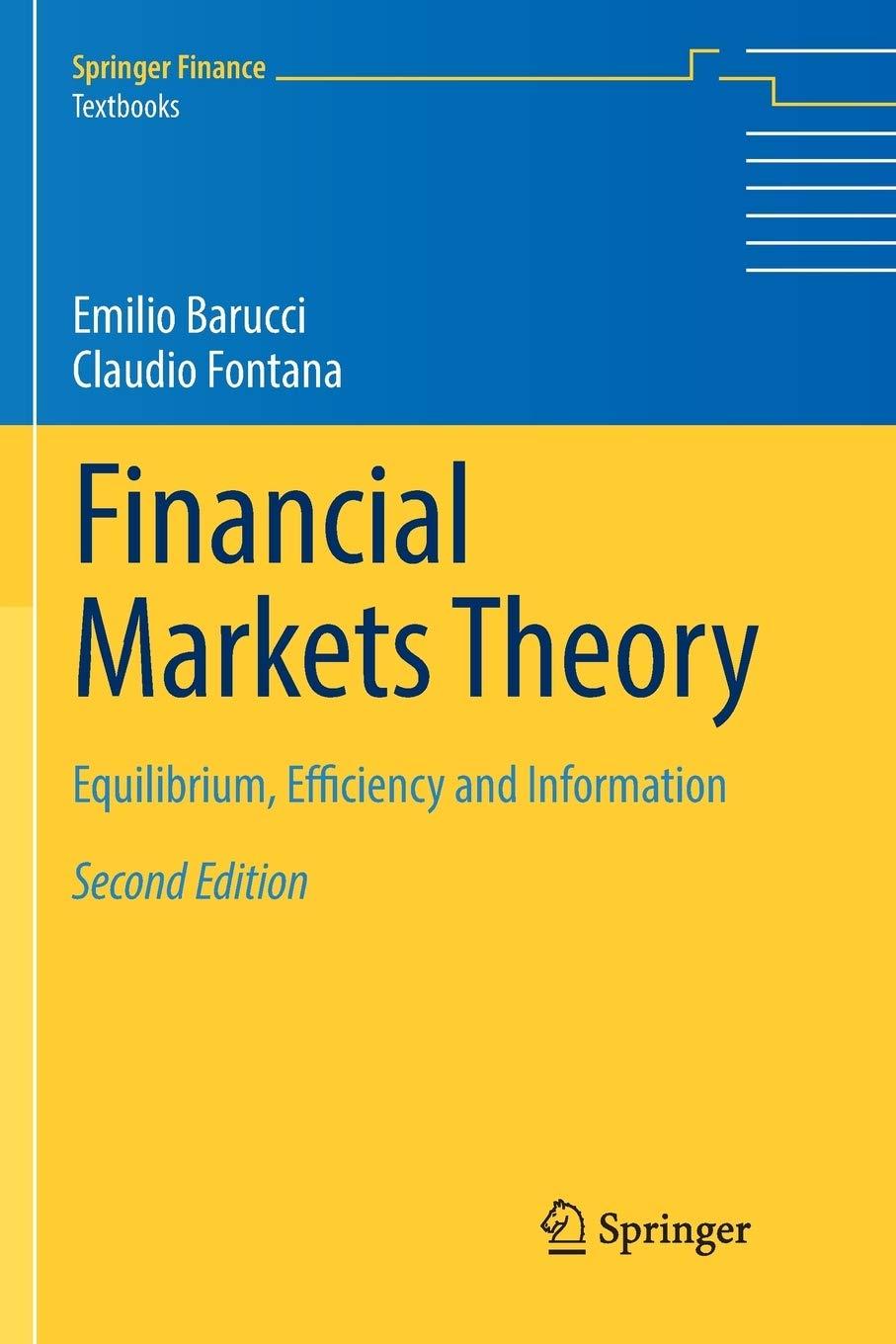Suppose that all the assumptions of the model of Kyle [1147] as presented in Sect. 10.2 are
Question:
Suppose that all the assumptions of the model of Kyle [1147] as presented in Sect. 10.2 are satisfied, apart from the fact that informed agents do not observe perfectly the liquidation value \(\tilde{d}\) of the asset, but rather an imprecise signal \(\tilde{y}\) of the form
\[\tilde{y}=\tilde{d}+\tilde{\varepsilon}\]
where \(\tilde{\varepsilon}\) is a normally distributed random variable independent of all the other random variables appearing in the model, with mean zero and variance \(\operatorname{Var}(\tilde{\varepsilon})=\sigma_{\varepsilon}^{2}\). Show that, under this assumption, the economy admits a unique linear equilibrium \((X, P)\), where \(X: \mathbb{R} \rightarrow \mathbb{R}\) and \(P: \mathbb{R} \rightarrow \mathbb{R}\) are two measurable functions such that
\[X(\tilde{y})=\alpha+\beta(\tilde{y}-\bar{d}) \quad \text { and } \quad P(\tilde{x}+\tilde{z})=\mu+\lambda(\tilde{x}+\tilde{z})\]
where the constants \(\beta\) and \(\lambda\) are explicitly given by
\[\beta=\sqrt{\frac{\sigma_{z}^{2}}{\sigma_{d}^{2}+\sigma_{\varepsilon}^{2}}} \quad \text { and } \quad \lambda=\frac{1}{2} \sqrt{\frac{\sigma_{d}^{4}}{\left(\sigma_{d}^{2}+\sigma_{\varepsilon}^{2}\right) \sigma_{z}^{2}}}\]
and where the constants \(\alpha\) and \(\mu\) are given by
\[\mu=\bar{d} \frac{\frac{\beta^{2} \sigma_{\varepsilon}^{2}+\sigma_{z}^{2}}{\beta^{2}\left(\sigma_{d}^{2}+\sigma_{\varepsilon}^{2}\right)+\sigma_{z}^{2}}}{1-\frac{\beta \sigma_{d}^{2}}{\beta^{2}\left(\sigma_{d}^{2}+\sigma_{\varepsilon}^{2}\right)+\sigma_{z}^{2}} \frac{1}{2 \lambda}} \quad \text { and } \quad \alpha=-\frac{\mu}{2 \lambda}\]
In particular, recalling that the market depth is measured by the quantity \(1 / \lambda\), this implies that market depth is increasing with respect to the variance of the error term appearing in the informed agent's observation (or, equivalently, decreasing with respect to the precision of the informed agent's signal). Similarly, the intensity of trading of the informed agent, as measured by the coefficient \(\beta\), is increasing with respect to the precision of his signal, as measured by the quantity \(1 / \sigma_{\varepsilon}^{2}\).
Step by Step Answer:

Financial Markets Theory Equilibrium Efficiency And Information
ISBN: 9781447174042
2nd Edition
Authors: Emilio Barucci, Claudio Fontana





